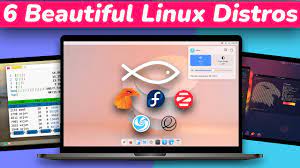Unlock the Power of Open-Source: Seamless Ubuntu Download Experience Await
Ubuntu Download: Your Gateway to Open-Source Excellence
Ubuntu is a popular open-source operating system that offers a user-friendly and versatile computing experience. Whether you are a beginner looking to explore the world of Linux or a seasoned user seeking a reliable platform, Ubuntu has something for everyone.
Downloading Ubuntu is a straightforward process that allows you to access a wealth of software and tools designed to enhance your productivity and creativity. By choosing Ubuntu, you are not only embracing free and open-source software but also joining a global community dedicated to innovation and collaboration.
How to Download Ubuntu
To download Ubuntu, simply visit the official Ubuntu website and select the version that best suits your needs. You can choose between the long-term support (LTS) release for stability or the latest version for cutting-edge features.
Once you have selected your preferred version, click on the download button and follow the on-screen instructions to save the installation file to your computer. You can then create a bootable USB drive or DVD from the downloaded file and begin the installation process.
Benefits of Using Ubuntu
Ubuntu offers numerous benefits for users, including:
- Free and open-source software
- User-friendly interface
- Vast software repository
- Regular updates and security patches
- Cutting-edge features and technologies
- Dedicated community support
Whether you are a student, developer, entrepreneur, or creative professional, Ubuntu provides the tools you need to succeed in today’s digital landscape. With its robust performance, customisation options, and compatibility with a wide range of hardware, Ubuntu is an ideal choice for individuals and organisations alike.
Join the Ubuntu Community Today!
By downloading Ubuntu, you are not just getting an operating system – you are becoming part of a thriving community that values freedom, collaboration, and innovation. Connect with like-minded individuals through forums, events, and online resources to share ideas, seek support, and contribute to the future of open-source technology.
Experience the power of Ubuntu today by downloading your copy and unlocking endless possibilities for creativity, productivity, and exploration in the world of open-source computing.
5 Essential Tips for Safely Downloading and Installing Ubuntu
- Ensure you download Ubuntu from the official website to avoid malware or corrupted files.
- Check the system requirements of the version of Ubuntu you are downloading to ensure compatibility with your hardware.
- Consider using a torrent client to download Ubuntu faster and more reliably, especially for larger files.
- Verify the integrity of the downloaded Ubuntu ISO file by comparing its checksum with the one provided on the website.
- Create a bootable USB drive or DVD from the downloaded Ubuntu ISO file to install it on your computer.
Ensure you download Ubuntu from the official website to avoid malware or corrupted files.
To safeguard your system and ensure a secure download experience, it is essential to obtain Ubuntu exclusively from the official website. By doing so, you mitigate the risk of encountering malware-infected or corrupted files that could compromise the integrity of your installation. Trusting the official source guarantees that you are receiving a genuine and unaltered version of Ubuntu, providing peace of mind as you embark on your open-source journey.
Check the system requirements of the version of Ubuntu you are downloading to ensure compatibility with your hardware.
Before proceeding with the Ubuntu download, it is essential to check the system requirements of the specific version you intend to install. Ensuring compatibility with your hardware is crucial for a smooth installation and optimal performance. By verifying that your system meets the necessary specifications, you can avoid potential issues and ensure that Ubuntu runs seamlessly on your device. Taking this simple step can help you make the most of your Ubuntu experience and enjoy all the features and benefits that this open-source operating system has to offer.
Consider using a torrent client to download Ubuntu faster and more reliably, especially for larger files.
Consider utilising a torrent client to enhance the speed and reliability of your Ubuntu download, particularly when dealing with larger files. Torrent clients leverage peer-to-peer technology to distribute the load across multiple sources, resulting in faster and more efficient downloads. By using a torrent client for your Ubuntu download, you can take advantage of increased download speeds and improved stability, ensuring a seamless experience when obtaining the operating system for your computing needs.
Verify the integrity of the downloaded Ubuntu ISO file by comparing its checksum with the one provided on the website.
To ensure the security and authenticity of your downloaded Ubuntu ISO file, it is essential to verify its integrity by comparing the checksum provided on the website with the one generated from your downloaded file. This verification process helps to confirm that your download has not been tampered with or corrupted during transmission, giving you peace of mind that you are installing a genuine and unaltered version of Ubuntu onto your system.
Create a bootable USB drive or DVD from the downloaded Ubuntu ISO file to install it on your computer.
To install Ubuntu on your computer, it is recommended to create a bootable USB drive or DVD from the downloaded Ubuntu ISO file. By creating a bootable media, you can easily initiate the installation process and set up Ubuntu on your system. This method ensures a smooth and efficient installation, allowing you to experience the benefits of Ubuntu’s open-source platform firsthand. Whether you are a beginner or an experienced user, creating a bootable USB drive or DVD is a convenient way to bring Ubuntu to your computer and start exploring its features and capabilities.






